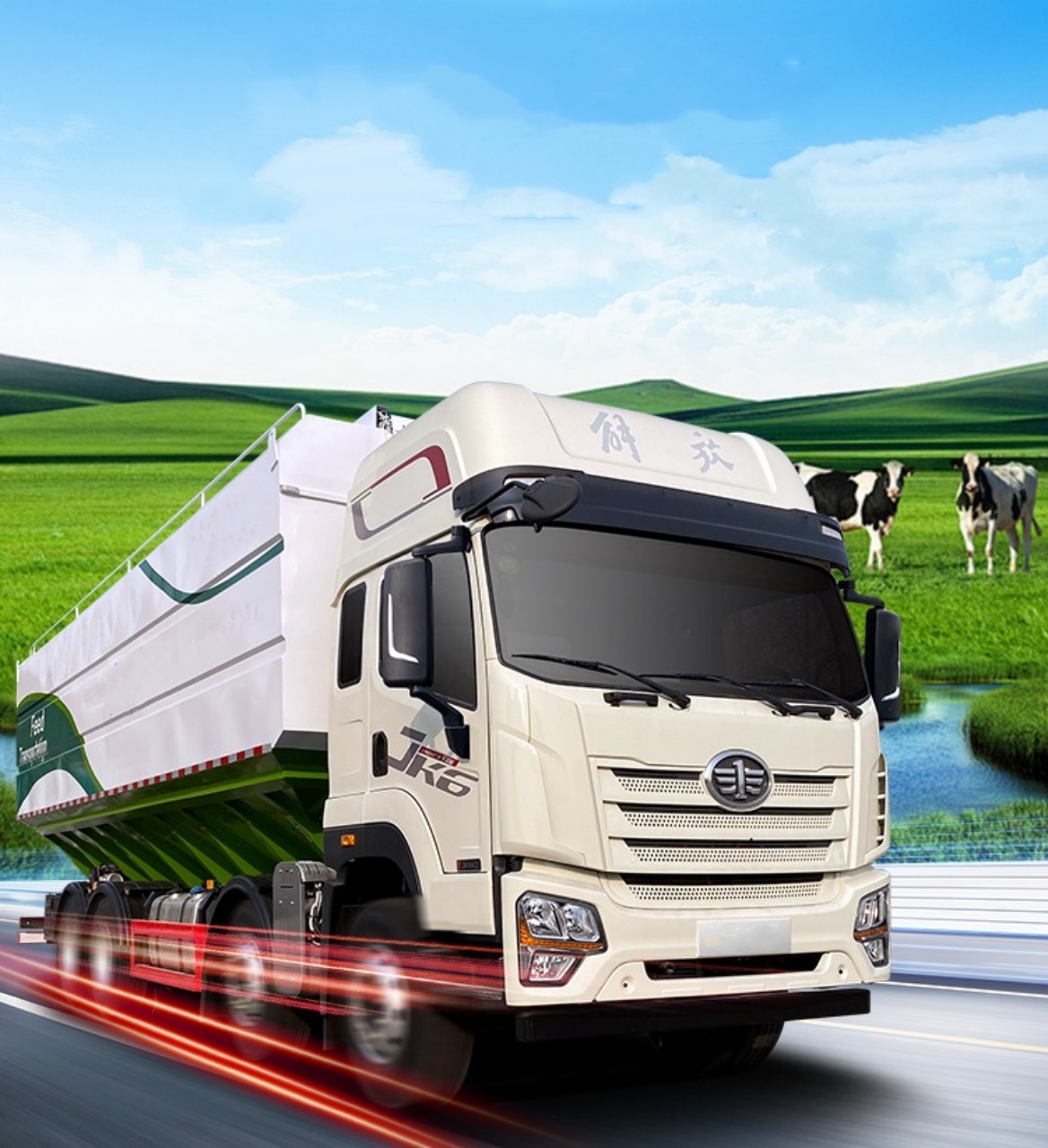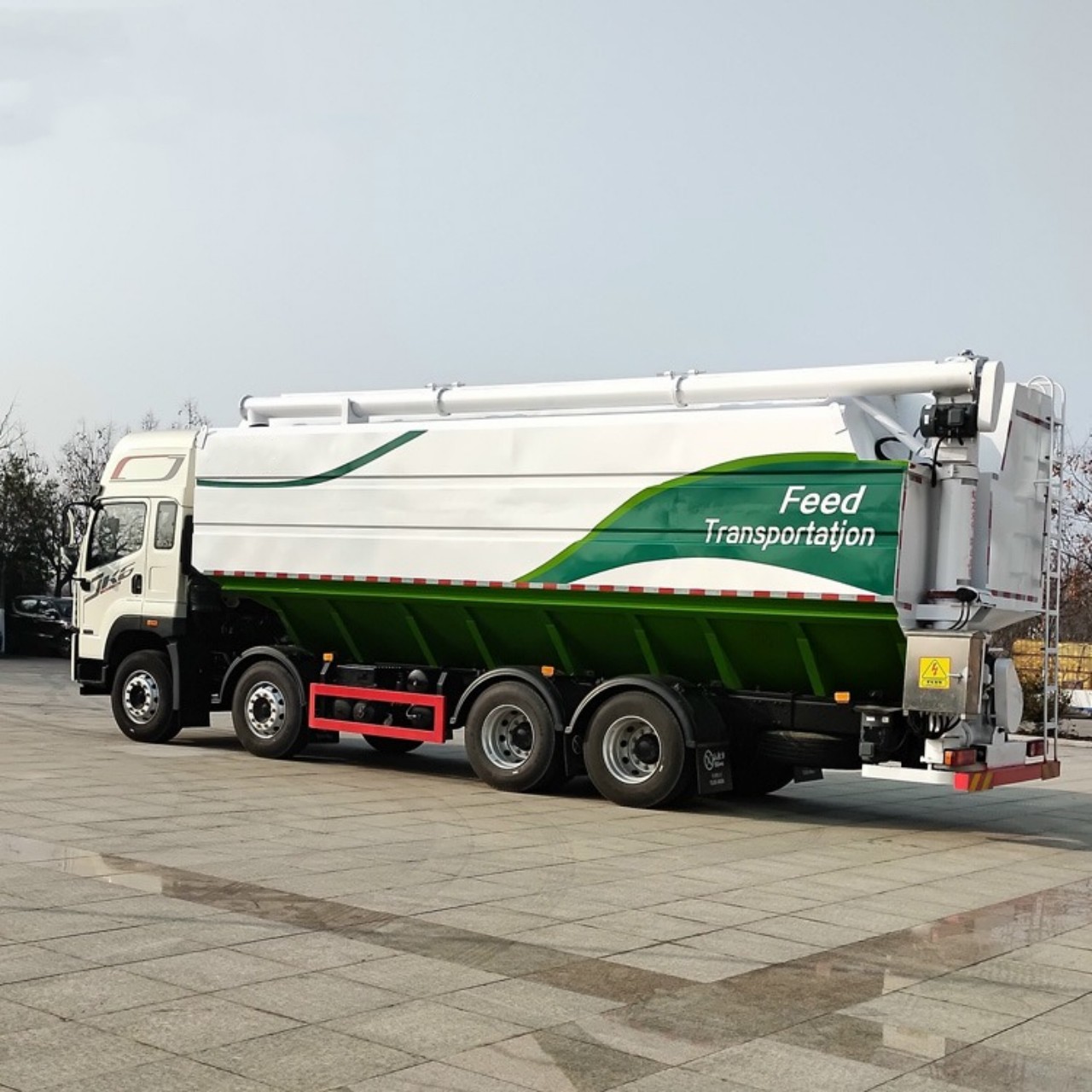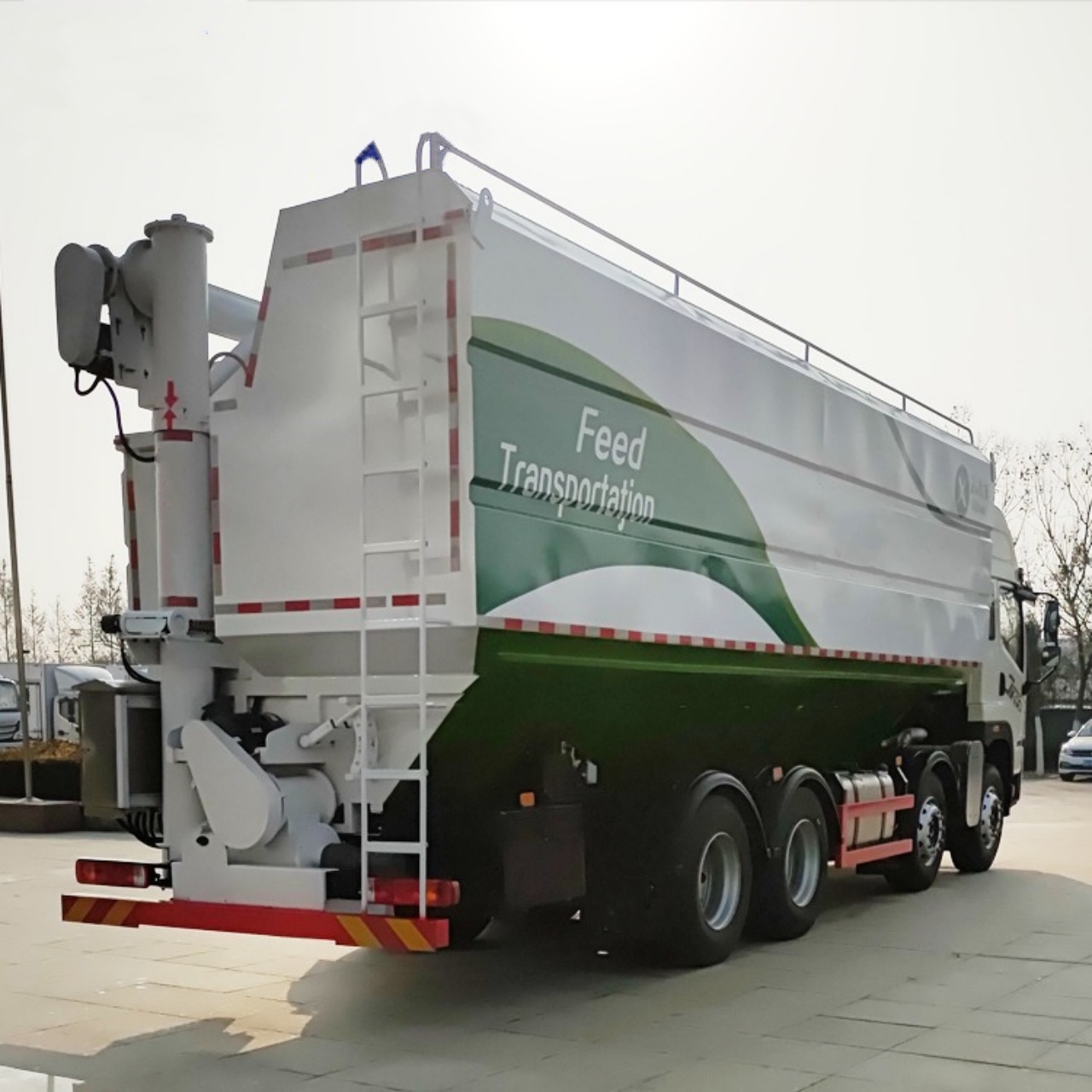Introduction
Pneumatic tank trucks, also known as dry bulk trailers or pneumatic bulk tankers, play a crucial role in the transportation industry, especially for hauling fine, dry materials like cement, flour, plastic pellets, and chemical powders. These specialized trucks use a pneumatic system to load and unload materials without the need for additional handling equipment. This article provides an in-depth look at their construction, working mechanism, applications, and advantages.
What Are Pneumatic Tank Trucks?
Pneumatic tank trucks are a type of bulk carrier designed to transport dry, free-flowing materials in large quantities. Unlike traditional dump trucks or flatbed trailers, they use pressurized air to facilitate the movement of goods into and out of the tank. This feature makes them ideal for industries requiring contamination-free and efficient bulk transportation.

Key Components of a Pneumatic Tank Truck
A typical pneumatic tank truck consists of the following components:
- Tank Body: The cylindrical storage unit that holds dry materials. Made from aluminum or stainless steel, these tanks are designed to withstand high pressure and resist corrosion.
- Air Compressor: Provides the pressurized air necessary for material movement. The compressor is usually powered by the truck’s engine or an auxiliary power source.
- Valves and Piping: Control the flow of air and materials during loading and unloading.
- Manholes and Hatches: Access points for loading materials and maintenance purposes.
- Filter System: Prevents dust and contaminants from entering or leaving the tank.
- Discharge System: A series of pipes and hoses that direct materials to their intended destination.
How Do Pneumatic Tank Trucks Work?
The working mechanism of a pneumatic tank truck involves the following steps:
1. Loading Process
- The truck arrives at the loading facility, where the dry bulk material is poured or pumped into the tank through a designated opening.
- Once the tank is filled, it is sealed to prevent contamination and leakage.
2. Pressurization
- The air compressor is activated to create pressurized air inside the tank.
- This pressure ensures that materials remain in a fluidized state, allowing smooth transportation.
3. Unloading Process
- Upon reaching the delivery site, the truck connects its discharge hose to the receiving silo or storage container.
- The controlled release of pressurized air pushes the material through the discharge system, ensuring an even and efficient flow.
- Filters and valves help regulate pressure, preventing blockages or excessive material discharge.

Common Uses of Pneumatic Tank Trucks
Pneumatic tank trucks are used across multiple industries due to their ability to transport fine, dry materials efficiently. Some common applications include:
1. Cement and Construction Industry
- Transporting cement, fly ash, and lime to construction sites or ready-mix plants.
- Ensuring dust-free and contamination-free material handling, reducing environmental impact.
2. Food and Agriculture Sector
- Hauling bulk food ingredients like flour, sugar, grain, and starch.
- Maintaining hygiene and preventing contamination during transportation.
3. Plastic and Chemical Industry
- Transporting plastic resins, PVC powders, and chemical additives.
- Ensuring materials remain in a dry and uncontaminated state.
4. Pharmaceutical Industry
- Delivering powdered chemicals and medical-grade substances.
- Maintaining sterility and preventing product degradation.
5. Mining and Industrial Applications
- Transporting fine minerals like bentonite, kaolin, and gypsum.
- Reducing material wastage and dust emissions.
Advantages of Using Pneumatic Tank Trucks
Pneumatic tank trucks offer several benefits over traditional bulk transportation methods. Some key advantages include:
1. Efficiency in Loading and Unloading
- The pneumatic system speeds up the loading and unloading process, minimizing downtime.
- No need for additional lifting equipment, reducing labor costs.
2. Contamination-Free Transportation
- The enclosed tank prevents exposure to moisture, dust, and contaminants.
- Ideal for transporting sensitive materials such as food and pharmaceuticals.
3. Reduced Material Waste
- The pressurized unloading system ensures that nearly all material is discharged from the tank.
- Minimizes leftover residue inside the tank, reducing product loss.
4. Cost-Effective Operations
- Fewer manual handling requirements translate into lower operational costs.
- Reduced risk of spillage or contamination leads to fewer product losses and regulatory issues.
5. Eco-Friendly Transport Solution
- Enclosed transportation reduces dust pollution and emissions.
- Eliminates the need for plastic bags or secondary containers, reducing packaging waste.
6. Versatility and Adaptability
- Can transport a wide variety of materials across different industries.
- Easily adaptable to different discharge requirements and storage facilities.

Considerations When Using Pneumatic Tank Trucks
While pneumatic tank trucks offer numerous benefits, there are several factors to consider before using them for transportation:
1. Material Compatibility
- Not all materials are suitable for pneumatic transport. Large, dense, or highly cohesive materials may require specialized handling.
2. Equipment Maintenance
- Regular maintenance of the air compressor, valves, and filters is necessary to ensure efficiency.
- Cleaning the tank after each load is crucial to avoid cross-contamination.
3. Operational Costs
- Initial investment in pneumatic tank trucks can be high, but long-term savings often outweigh the costs.
- Compressed air systems require energy, which should be factored into fuel consumption calculations.
4. Regulatory Compliance
- Transporting food, chemicals, and hazardous materials requires adherence to specific regulations.
- Operators must ensure that tanks meet industry standards and safety requirements.
Conclusion
Pneumatic tank trucks provide a highly efficient and contamination-free solution for transporting dry bulk materials. Their ability to streamline loading and unloading processes, reduce material waste, and maintain product integrity makes them indispensable across multiple industries. Despite initial costs and maintenance requirements, the long-term benefits of these specialized trucks make them a worthwhile investment for businesses involved in bulk material transport.
As industries continue to demand efficient and eco-friendly transportation solutions, pneumatic tank trucks will remain a vital component of modern logistics and supply chain management.


